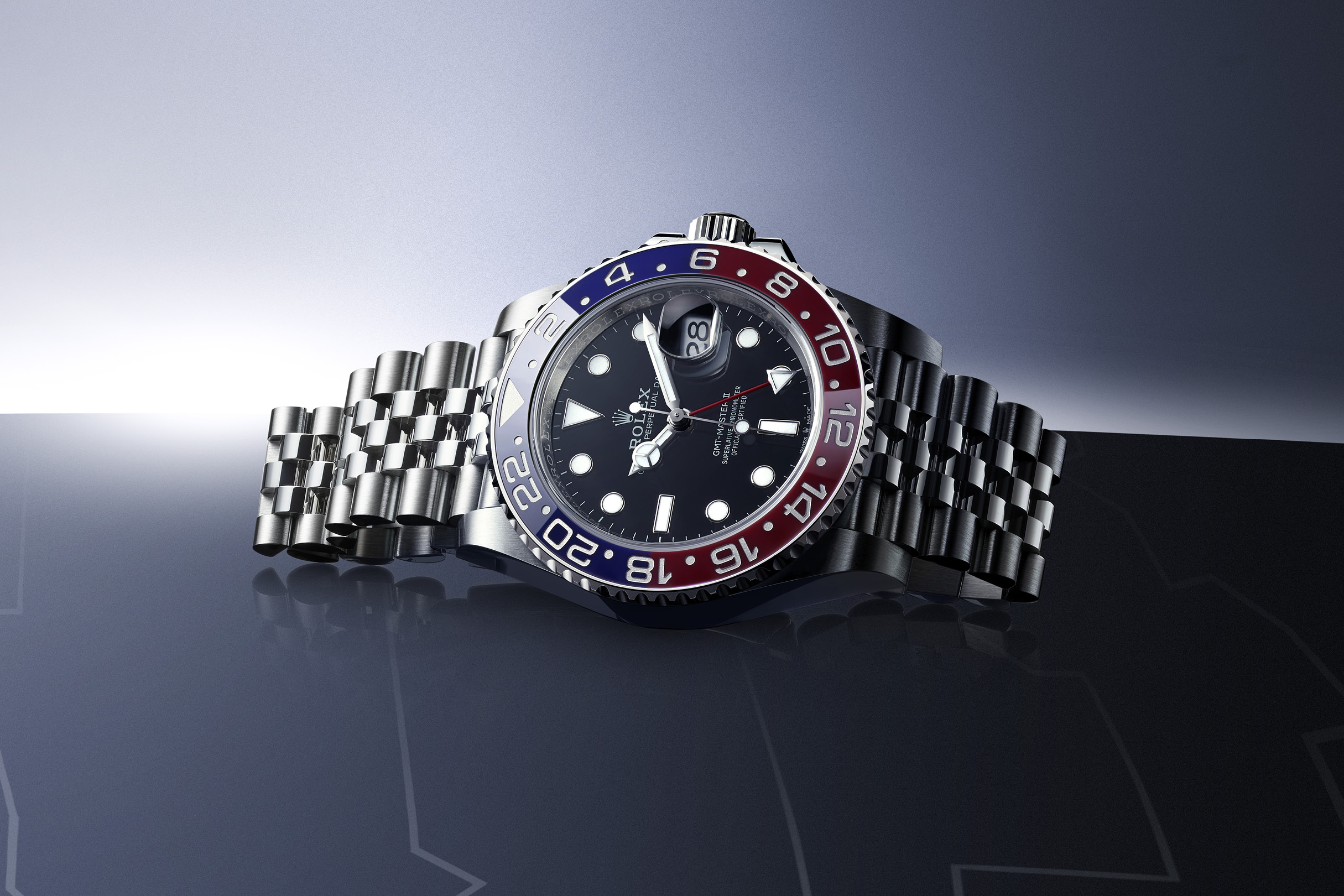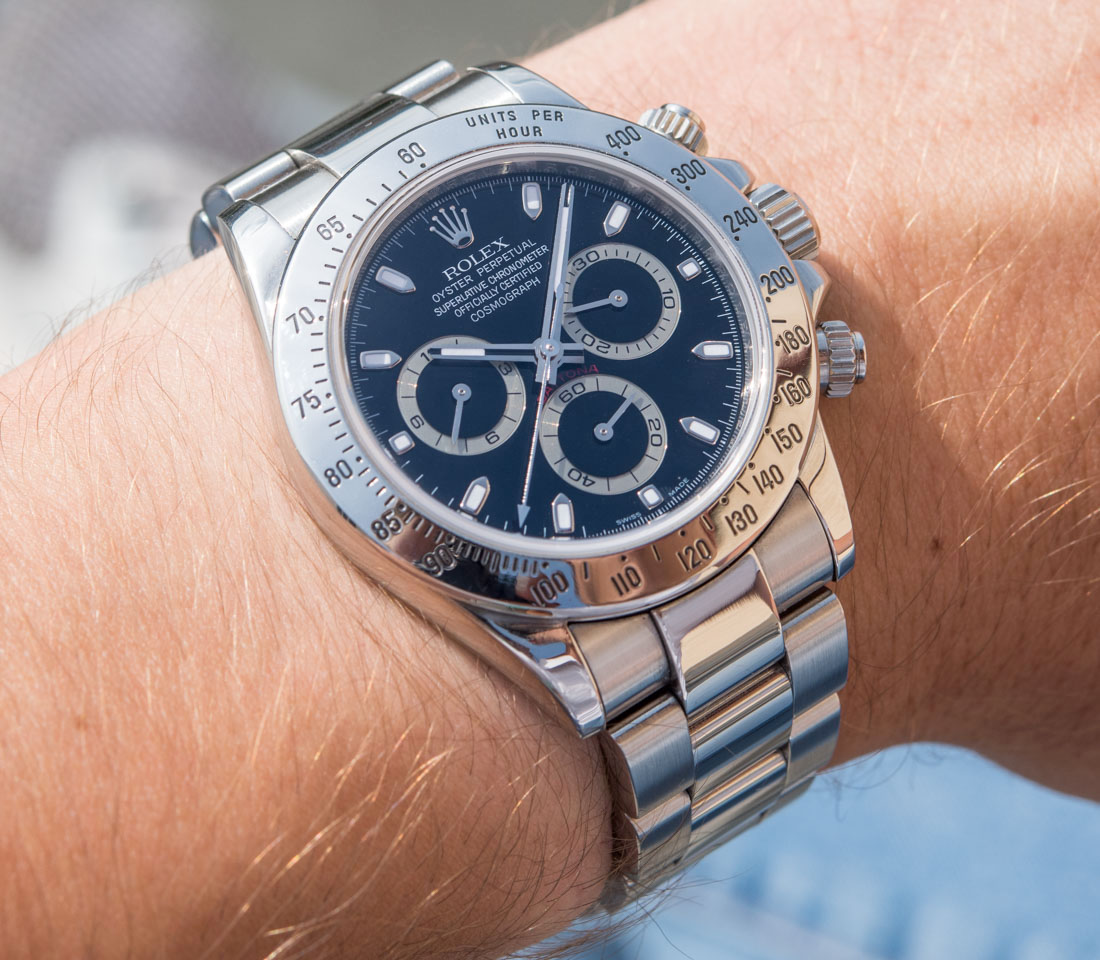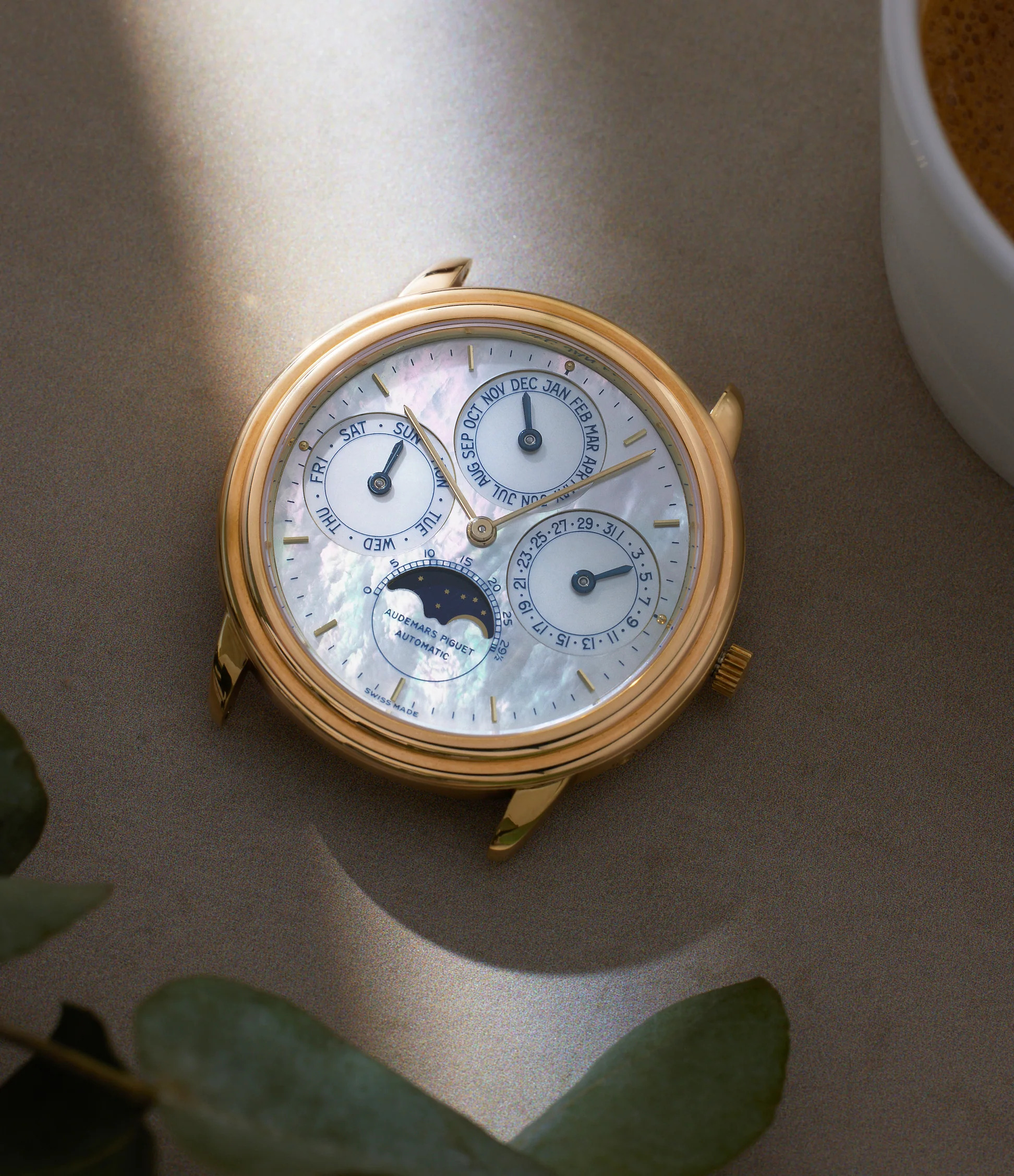Neo-Vintage Watches: What Is It All About And Why Should You Bother?
Neo-Vintage watches have been hot news recently. With big brands like Vacheron Constantin and Audemars Piguet seeking to ride the coattails of this growing trend, why is Neo-Vintage becoming so popular?
Vintage watches are notoriously difficult to get your hands on. They tend to be on the market briefly, then snatched up by some rich folk in a tweed jacket and with too much money, smoking on an old pipe. In the current cost of living crisis and inflation, times are tough for the common man. This is why an alternative to the vintage watch scene is rising, bringing with it old school charm with modifications to the latest materials or features, keeping it as relevant as banking worries affecting the FTSE 100.
Timelords, while a new Rolex Submariner or Omega Speedmaster may not cut the Neo-Vintage mustard, we must look at what does on this transitional journey. Time to grab a drink and join us as we explore the rising world of Neo-Vintage watches, and whether or not you should do your due diligence on them. Read on!
What is a Neo-Vintage Watch?
Definition of Neo-Vintage
One that blurs the lines of a modern and vintage watch, it tends to be a combination of vintage elements such as its design coupled with modern elements like materials or an updated movement.
Well, hold on a second. Time can’t be modified to fit two different periods of time. Can it? Using this very obvious piece of knowledge, Neo-Vintage actually means the physical aspects of a watch. For example, a watch may have an old design but have cutting edge technology or materials, the latest calibre or movement.
Neo-Vintage typically came from moments in time when we saw these changes being made. For example, the 1980’s saw the onset of the quartz crisis and as such, mechanical watches quickly changed designs and materials in order to keep relevant.
Key Aspects of Neo-Vintage Watches
Neo-Vintage watches do have some consistencies when it comes to what makes them both vintage and modern.
Firstly, it relies on whether these watches were created during the late 1970s and into the 2000s. We chose these dates because this is the period wherein a technical revolution occurred and as such there would've been collections before this time that were being updated with the latest materials and complications. Of course, this wasn't a universal thing thus it's only applicable to certain brands.
The next point is the type of luminous material that lies within these watches. Typically, most Neo-Vintage watches utilise a luminous material named Tritium. Essentially, tritium was used in the early 1960s and was applied to the dial and hands as an alternative to radium. As what usually happens with watches, tritium was replaced with Super-LumiNova, the luminous solution we see in most modern watches. While Super-LumiNova lasts longer than tritium, it doesn't have the ability to change colour over time and will remain a vibrant white throughout its lifespan.
Tritium has the capability of gleaning a nice patina finish on watches, changing colour from blue, orange or green to a creamy white. This aesthetic is highly coveted as it is very unusual and had a fairly short run of production, spanning from the early 1960s to the end of the 1990s. One other point to mention is the advancements in technology that some models have utilised, removing their vintage status and putting them in the realms of Neo-Vintage watches. Specifically, the updates would include things like using sapphire crystals, increase in the quality of case materials and improvements to the movement. These obviously breach the terms of being a vintage timepeice as the components are far too modern.
Finally, the most obvious editions of Neo-Vintage watches tend to be those that have old school features which are blended with modern elements. Using the aforementioned tritium lume, these watches could feature this vintage aesthetic while incorporating modern elements such as a sapphire crystal or hacking movement in order to modernise the watch. This would result in the watch still having vintage elements through tritium but be entrenched in the modern horological world due to its other design points. As such, it's defined as Neo-Vintage.
Examples of Neo-Vintage Watches
Neo-Vintage watches have stemmed from the biggest brands such as Rolex to Audemars Piguet, signifying that this isn't a trend that is found in the underground watch scene. Below are a few examples of Neo-Vintage watches that are highly revered by collectors.
Rolex GMT Master 16710BLRO
The 16700 reference epitomises the peak of Neo-Vintage watches which is key for those looking to buy a Rolex which marries modernity with a slice of vintage.
The Rolex GMT-Master was released in the 1950s for Pan American Airways as a solution for pilots to tell the time in multiple time zones simultaneously. As such, the GMT has a 24 hour hand as well as a 12 hour hand. Combined with the 24 hour bezel, the watch's hand allows the user to read the home time while the 12 hour hand shows ‘local’ time. Perfect for those on the go business types.
The Pepsi model is one of the longest serving models since the collection's release in the 50s. Released in 2001, The Rolex GMT Master 16710BLRO offers a slimmer alternative to its later editions. Ideal for more delicate wrists, this is predominantly due to the Rolex ‘Supercase’ being introduced in 2005 with the new breed of GMT-Master II. This widened the bezel and fattened the lugs instead of increasing the watch's diameter past 40mm.

Rolex GMT Master 16710BLRO - Source - Rolex
The watches design is extremely vintage with the first red and blue Pepsi inspired design seen as far back as 1954. Due to the watch also being pre-ceramic, the bezel is more likely to show minor wear and tear and offer a patina type effect, highly regarded by watch collectors or those looking to buy a Rolex.
Consequently, watches of this nature are extremely popular as it is not only discontinued but features the sought after Pepsi design. The twin colour Cerachrom bezel is extremely sought after by collectors due to their rarity in Rolex’s portfolio and its rich history in aviation makes this watch extremely valuable. The Rolex GMT Master 16710BLRO is a pure Neo-Vintage number as it features a modern sapphire crystal and white gold markers with an older aluminium bezel showing the combination of both older and newer technologies.
Pair it with a modern suit and some leather boots with a similar patina effect if you really want to go with the full vintage a la Steve McQueen. You cannot buy a Rolex GMT Master 16710BLRO at retail at the time of writing.
Rolex Daytona 116520
The Rolex Daytona coveted whether it's new or old, broken or fixed, vintage or Neo-Vintage. Specifically, The Rolex Daytona 116520 represented the incorporation of an in-house movement, the 4130. This was a significant move as it modernised the previous calibre found in the old Daytona watches. It lowered the number of components needed and increased the battery reserve by 22 hours from 50 to 72.

Rolex Daytona 116520 - Source - Ablogtowatch
The watch is Neo-Vintage as it is made out of stainless steel showing how it was pre-Oyster steel and it utilises a pre Cerachrom bezel. The Neo-Vintage aesthetic is certainly there, especially since the calibre is modern which offers a contrast to the old school design.
Consider this timepiece valuable as the rich history of the Rolex Daytona 116500 together with modern watchmaking of the highest technical degree. The tachymeter and sporty sub dials relate to its rich racing heritage that the Daytona prides itself on. Get yourself a slick leather sports jacket if you want to follow the sporty theme or dress it up with a classy black suit to match the dial and contrast it with the steel case and bracelet.
You cannot buy a Rolex Daytona 116520 at retail due to its discontinuation in 2016.
Audemars Piguet Quantieme Perpetuel 25657BA
The Audemars Piguet Quantieme Perpetuel 25661/002 BA was released in 1989 and represented the watchmaking equivalent of a bicep flex, Arnold Schwarzenegger would be proud of. Complicated watches were fairly unheard of throughout the late 70s and 80s, so for Audemars Piguet to release the world's thinnest automatic perpetual calendar instantly bolstered their status as one of the greatest watch brands of all time.
For those watch nerds among us, this period was the era of the Quartz Crisis, a tumultuous period in time for the mechanical watchmaking industry. This period fulfils the criteria of being in an era of transition and change from vintage design to more exciting and modern watches.

Audemars Piguet Quantieme Perpetuel - Source - A Collected Man
The Quantieme Perpetuel 25661/002 BA is Neo-Vintage due to it taking the Audemars Piguet style of the 1940s with its clean lines and simple refinement and blending it with newer materials. It's tight and the dial is lacquer instead of enamel as well as the text being a traditional serif font.
The watch also utilises a diamond style for the subdials which is reminiscent of Audeamars Piguet in the 1940s such as the reference 5503. It uses a sapphire crystal however which adds a modern feel to the watch. Furthermore the dial is the mother of pearl and the rotor is skeletonised giving an avant garde view of the inside of the model.
These watches are worth their salt as it's from a limited edition set of 50 and is a celebration of the 10 year anniversary of the model. The black leather strap allows the watch to be worn with the smartest of outfits or be dressed down with a blue jumper with gold stitching to match the case and make you look a little regal. You cannot buy an Audemars Piguet Quantieme Perpteuel at retail at the time of writing.
Are Neo-Vintage Watches Desirable?
Neo-Vintage watches are becoming increasingly popular with a new generation of watch collectors and those looking to buy a watch.
Gen Z, or the thumb-and-screen generation, seek out Neo-Vintage watches due to their affordable allure in comparison to vintage watches. In a world of the latest technology being refreshed on a regular basis, Neo-Vintage watches seem the best alternative to the crippling weight of mass produced plastic. Watch fans should revere technology too. After all, that is what you are using while you are reading our article. It also allows you to research in depth all the elements of the watch you may like. This isn't exclusive to watches either. For example, luxury cars and art are similarly lusted after by enthusiastic collectors.

Patek Philippe Aquanaut - Source - Patek Philippe
Being able to have a transitional watch allows you to explore the vintage designs or elements of the past with a more modern slant. This isnt always a negative aspect either. Some modern features can enhance watches of this nature, making it more durable and allowing your Neo-Vintage timepiece to last longer. A quick example would be the Patek Philippe Aquanaut which was released in 1997.
The original watches used tritium but were later modernised with sapphire crystals. While you may think this harms the vintage aesthetic, in reality, the tritium patina is still there but with a higher level of protection as afforded by the sapphire crystal. This is what makes the Neo-Vintage market so sought after. These models possess the unique elements of watches from a different era while modernising them with new materials. Rolex for example utilises 904L steel in their watches nowadays which is much more effective than 316L steel they used previously.
Vacheron Constantin, a significant brand in the luxury watch industry and member of the Holy Trinity with Audemars Piguet and Patek Philippe have also followed the Neo-Vintage trend. Their FiftySix watches collection was inspired by the ref. 6073 in 1953 but is refitted with the latest movements and materials in order to keep it relevant. The model still retains its classic dial but now has a signature Maltese cross inspired case and avant garde technical elements such as a 22 carat pink gold oscillating mass.
This isn't an isolated case either as big brands such as Cartier have been continually modernising the Cartier ‘Santos’ which was released way back in 1904. The case still has its notable eight screws which have been present from its original release but now the bezel is slimmer and sits nicer on the wrist and materials like platinum had been utilised in models from 1988.
Neo-Vintage watches are therefore doing the horological rounds presently and are highly desired amongst enthusiasts. For some, it may be the rarity element that appeals to them. For others, it may just be the prospect of owning something that has its historical roots, stemming back a century. Whatever your reason may be, you are more than entitled to buy a watch and indulge!
Conclusion
There we have it, Timelords. Have we lit a horological fire beneath you for Neo-Vintage? Through making the past more accessible to the future, there is a whole new generation of watch aficionados waiting to get involved. These types of watches are much more affordable than vintage watches but still retain their old school charm through their design. The bonus of having mod cons like stronger materials mean you can hold onto your watch for longer and it can retain its vintage allure. Win-win! Who knows it may reach a point where future generations consider these Neo-Vintage pieces to be vintage themselves… but time will tell.
Wouldn't you love to own a Patek Philippe Nautilus 3800/1 from 1994, just to see its sigma signed dial and tritium lume hands and indices? There’s something incredibly special about having watches with vintage characteristics but are bolstered by modern features to make it more durable and look better.
Like the Audemars Piguet Royal Oak 14790ST with tropical style dial, there’s something very 90s about this burgeoning trend. Furthermore, models such as the Patek Philippe 3940 Perpetual Calendar also belong to this category which saw it sell for more than £140,000 at auction. Smaller cases and the constant struggle between dressier and more sporty apparel means these watches will sit proudly on many collectors wrists for years to come.
Feeling the need to buy an Audemars Piguet? Yearning to buy a Rolex GMT-Master to see what the old school bezels looked like? Spend your time wisely by having a chat with Chrono Hunter. Contact us today and let one of our dedicated team start the ball rolling with finding the best Neo-Vintage watch for your collection. We only use our established portfolio of luxury retailers who we have built up over time and who have been verified by us. If you are looking to buy a watch or sell a watch, let Chrono Hunter be your essential source and start saving money the smart way!
Discover, hunt, buy, sell
Further Reading:
Chrono Hunter's Bold Predictions And Outlandish Forecasts For The Watch Industry In 2023
Buy Or Sell A Luxury Watch The Smart Way With Chrono Hunter
If you are considering your new purchase or perhaps the sale of a beloved timepiece, Chrono Hunter is the smart way to buy or sell a luxury watch.
Compare Offers from the world's most reputable luxury watch retailers.
Save Time.
Save Money.
Personalised Service.
Hassle-Free.

.png)